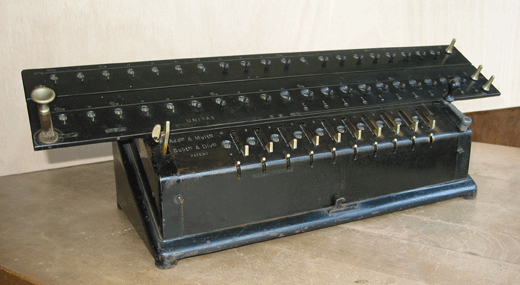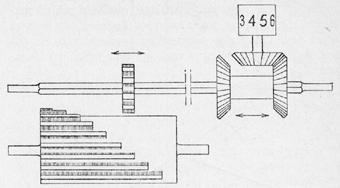Unitas Arithmometer
UvA Computer Museum catalogue nr 03.43

There are two movable accumulator registers which can be operated either separately or simultaneously. In the stationary number entry register, a decimal figure (say 6) is set by operating a lever, which shifts the corresponding accumulator cogwheel with respect to a 'stepped drum' (*) such that the drum presents 6 of its 10 teeth to the cogwheel. On a full turn of the hand crank which drives the stepped-drum shaft, the accumulator wheel is rotated to position 6. Turning the crank once again, the accumulator wheel ends up in position 2, while turning its left neighbour to 1 as it passes through the 0 position.

(*) Stepped drum: see the lower picture, taken from the Dutch ENSIE encyclopedia (1946). The construction to the right allows either addition/multiplication or subtraction/dividing, always turning the crank in clockwise direction. A similar mechanism is used in the Unitas machine.
